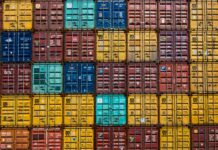
The Digital Container Shipping Association (DCSA) has published its Arrival Notice 1.0.0 Standard, introducing a universal API designed to replace the fragmented, manual methods currently used to distribute arrival notices across the shipping industry.
An arrival notice is a key document issued by carriers to consignees, notify parties or their agents to confirm that cargo is due to arrive at a designated port or terminal. It triggers critical release and delivery processes, yet today these notices are often sent as PDF attachments via email — a practice that leads to delays, inaccuracies and frequent disputes. Carriers face heavy administrative workloads and limited visibility, while shippers and consignees must navigate inconsistent formats and labor-intensive processing.
DCSA’s new standard defines the arrival notice as structured, machine-readable data exchanged via API. Built for global use, it supports multiple languages and local content requirements while maintaining a consistent and interoperable data model.
By replacing PDFs with structured data, the standard aims to automate receipt confirmation, reduce manual work, eliminate format inconsistencies and improve accuracy and timeliness. It also supports efforts to lower financial disputes related to storage, detention and demurrage caused by missing or late notices.
“Arrival notices are one of the most widely used documents in shipping, but until now they lacked a standard digital format,” said Flavia Buso, End-to-End Documentation Product Owner at DCSA. “With this standard, we provide the industry with a consistent, automated way of sharing arrival notices that works globally while accommodating local requirements.”
The release extends DCSA’s standards framework further into the import process and supports the industry’s wider digitalisation goals, including full adoption of electronic bills of lading.
“The Arrival Notice is the foundation over which we will continue to standardize the import release process,” said Iker Echave, Head of Standards at DCSA. “Each new standard strengthens the digital foundation for global trade and takes the industry another step toward end-to-end automated documentation.”





